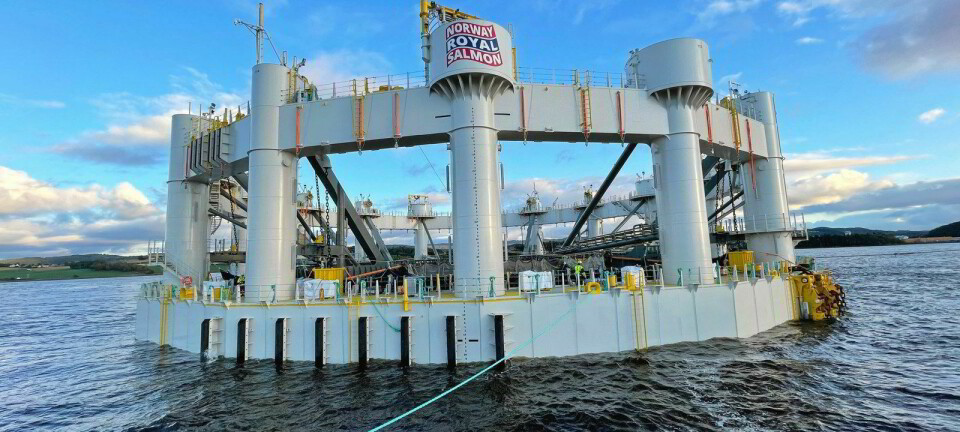
SalMar and Lerøy opt for Aquatraz closed cages
In a joint project, Scottish Sea Farms' co-owners are building six new Aquatraz C2 cages in collaboration with Seafarming Systems. The project marks a new step towards more closed salmon production at sea.
For both companies, this is part of their innovation-driven strategy to develop and test various technologies for the aquaculture of the future.
The project involves the construction of six Aquatraz C2 units delivered by Seafarming Systems. The technology has been developed in collaboration with SalMar and Lerøy, building on the experience gained from the Aquatraz S1 delivered to Lerøy in 2023-24 and the first four Aquatraz cages delivered to former fish farmer Midt-Norsk Havbruk, which is now part of SalMar, between 2018-2020.
The C2 will differ from the earlier semi-closed Aquatraz iterations by being fully closed all the way to the bottom.
First stocking in 2027
Each unit has a water volume of 70,000m³, with six water intakes at 35 metres depth to ensure lice-free water and efficient water exchange. The six pens will double the volume of floating closed containment space available for production in Norway.
"If everything goes according to plan, the first fish will be released into these units in the first quarter of 2027, with full operation from 2028," said SalMar chief executive Frode Arntsen.
Parts of the structure will be manufactured in modular form in China, and assembly will take place at a Norwegian shipyard. The project also involves technology suppliers from Norway and Europe.

One step further
The goal is to help solve key challenges related to sea lice and emissions.
"We have worked purposefully and systematically with technology development for many years, and have come a long way with submerged cages and testing of semi-closed solutions. Now we are taking this a step further," said Henning Beltestad, chief executive of Lerøy Seafood Group ASA.

SalMar and Lerøy emphasised that this is not a signal that all production should be transferred to closed systems, but a clear response to the industry's and authorities' shared desire to develop new solutions that can contribute to sustainable growth in Norwegian seafood production.
Both companies stressed that traditional technology will continue to be the foundation for Norwegian aquaculture, not least in more weather-exposed locations, and further development of this equipment technology will go hand in hand with investment in new technological solutions.
SalMar and Lerøy have a background of collaboration as 50-50 owners of Scotland's second-largest salmon farmer, Scottish Sea Farms, and said their Aquatraz collaboration increases the scale of the closed-cage project, and knowledge transfer, and also dilutes risk.
A decade of development
Alf Reidar Sandstad, chief executive of Seafarming Systems, said Aquatraz C2 is the result of over ten years of development work, with continuous improvement and learning from practical operation.
"This gives us a solid technical and biological basis for taking the next step in the development of closed systems," said Sandstad.
"The key is cages with large farming volume, high water exchange, low energy consumption and competitive price."
The companies are now working to arrange for the delivery of the cages in about a year, so that production at sea can begin. This requires the necessary clarifications and permits from the authorities. The companies said that it is crucial that the authorities contribute with stable framework conditions during this phase.
























































